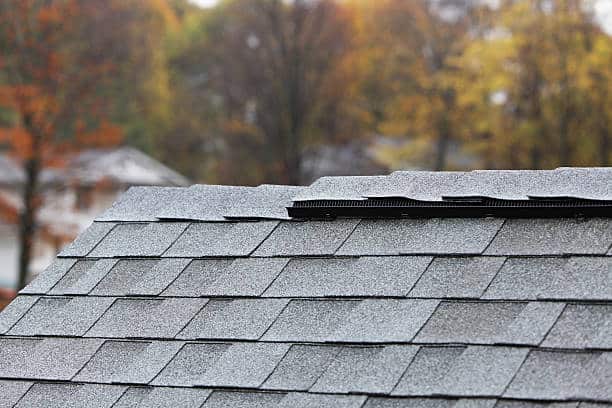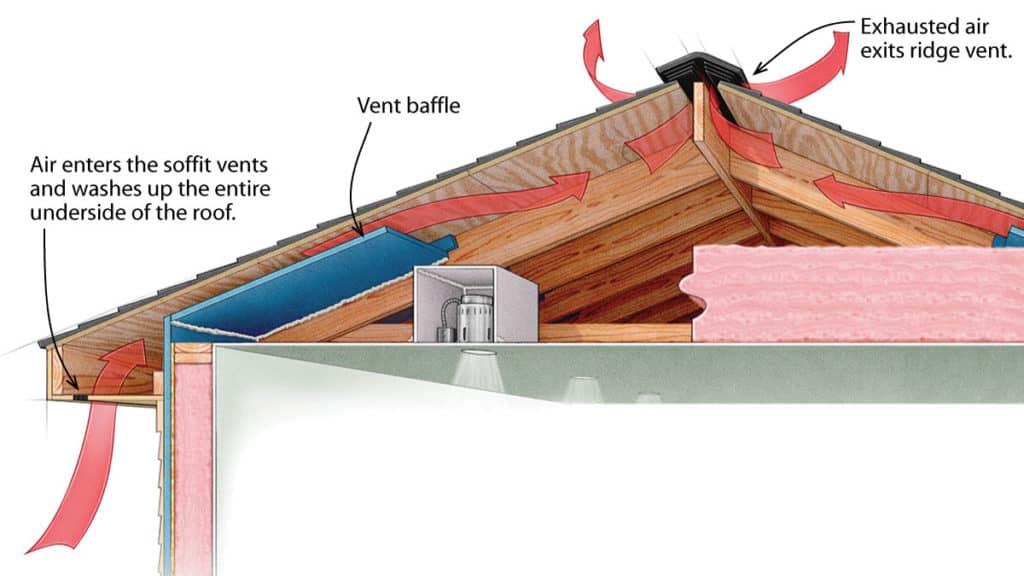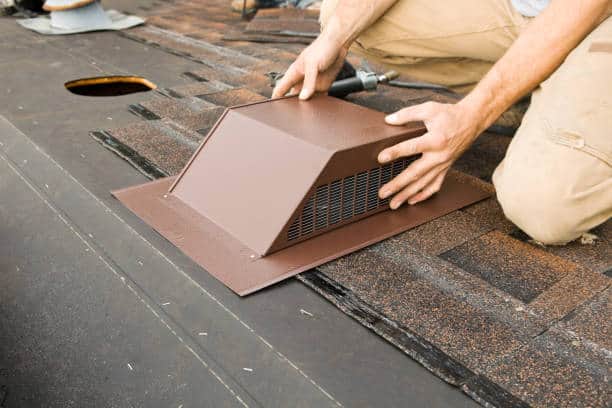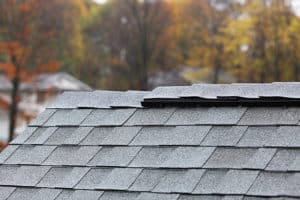Attic Ventilation: Your Roof needs it

Your attic ventilation plays an important role in the over-all health of your roof and home. Having adequate ventilation can be a factor in determining how much you’re paying for heating and cooling costs. Your roof needs to breathe in order to reach it’s full potential life span. Ventilation also plays a huge role in whether or not your battling ice dams.
How Attic Ventilation Works
Proper attic ventilation assists in preventing moisture and heat build up that can cause damage to your home. Intake vents along the soffits as well as exhaust vents or ridge vents at the ridge are integral to proper attic ventilation. Cooler air is drawn in through the soffit lower on the roof, and warmer air goes out through the vents at the top allowing continuous air flow.

When It’s Not Working
Some signs the attic ventilation isn’t working optimally
- Water stains, dampness, or other evidence of water on your roof sheathing, or wood rot in structural supports
- Shingle or granule loss due to thermal cracking and blistering of your shingles
- Corrosion and rust on metals in the attic such as nail heads, light fixtures, or HVAC system parts
- A regular build up of ice dams
- Increases in your heating and cooling costs without explanation
What To Do If You Suspect Poor Ventilation

Concerned your ventilation may be inadequate or noticing signs like those listed above that you may have a problem? Call a roofing contractor like Star Improvements of MI for an inspection. We can suggest options, whether it be repair, upgrade, or full replacement. There are several types of venting that can make sure you have plenty of airflow. Ridge vents, Static vents, Gable vents, and Soffit vents are the most common types we install ensuring your roof has many healthy years to come.

